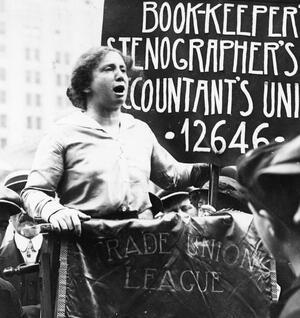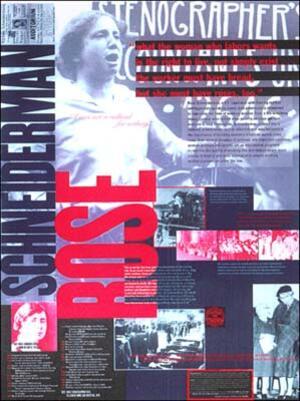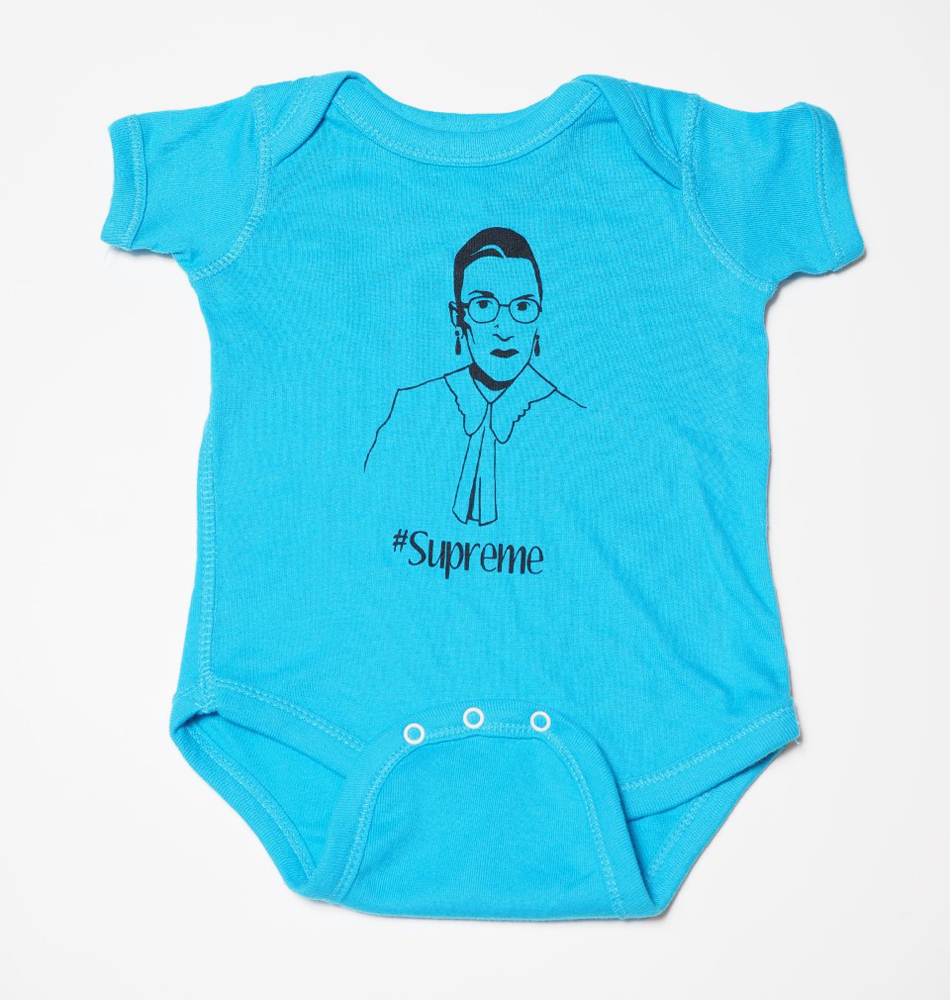10 Things You Should Know About Rose Schneiderman
The Jewish Women's Archive Women of Valor posters portray the images, words, and life stories of 18 Jewish American women who challenged conventional expectations and helped change our world. The full-color posters (18″×24″) can be purchased as a set or separately. To order this poster or other posters from our Women of Valor poster series, please contact us with your request.
-
Born in 1882 into a devout Jewish family in Saven, Poland, Rose Schneiderman was raised from an early age to believe she was capable of doing anything a man could do. Her parents enrolled her in a Jewish school at the age of four. Two years later, the family moved to the city of Chelm so that Rose could attend a Russian public school and receive an excellent secular education.
-
In 1890, Rose and her family left Poland and immigrated to New York City. Two years later, however, tragedy befell the family—Rose’s father died, leaving behind a pregnant wife and three young children. Though Rose’s mother Deborah found extra employment and took in boarders, she struggled financially and had to send her children to an orphanage temporarily. When Deborah lost one of her jobs in 1895, 13-year-old Rose had no choice but to end her schooling and join the workforce.
-
Concerned about Rose’s reputation, Deborah helped her daughter find work as a salesgirl, a position with higher status than a factory job. Deborah’s emphasis on respectability had a lasting impact on Rose. But after three years as a salesgirl, Rose decided she needed to make more money and found employment as a cap maker.
-
Although her wages were higher, Rose became increasingly incensed about the discrepancy between the pay men and women received for the same work. In 1903, she led a successful campaign to organize her shop for the United Cloth Hat and Cap Makers’ Union. The effort earned her the respect and confidence of male union members who doubted that women had the ability to unionize. At four feet nine inches tall and with a full head of red hair, Rose also impressed union members with her fiery and captivating oratory.
-
In 1904, Rose Schneiderman became the first woman to hold an office in a national union when she was elected to the general executive board of the International Ladies Garment Makers Union (ILGWU). The following year, she led a strike of male and female cap makers, which brought her to the attention of the brand-new Women’s Trade Union League (WTUL), one of the few organizations to have both working- and middle-class members. In 1906, she was elected vice president of the New York branch of the WTUL.
-
Rose’s efforts to organize workers in the Lower East Side garment industry helped build momentum for the 1909 “Uprising of the 20,000,” a general strike of shirtwaist makers, most of whom were Jewish immigrant women. The largest strike by women up to that time, the 11-week-long walkout ended with concessions from a majority of shirtwaist factory owners; a few of the larger companies—including the Triangle—refused to agree to the settlement.
-
At a suffrage rally in 1912, Rose rephrased a poem into the words for which she is best known—“The worker must have bread, but she must have roses, too”— a reflection of her belief that the goal of the labor movement was to ensure that workers could do more than just meet their basic needs.
-
Rose Schneiderman resigned from her organizing efforts at the NYWTUL in 1914 over what she considered the growing strains of antisemitism and opposition to socialism in the League. She briefly held a position with the ILGWU but was frustrated by the male leadership’s lack of commitment to women. In 1917, Rose began focusing on the suffrage movement, serving as chair of the Industrial Wing of the New York Woman Suffrage Party. Within several years, she had a reputation as one of the country’s most forceful suffragists and labor activists.
-
By 1926, Rose had returned to the WTUL, where she was elected to the national board. She became good friends with Eleanor and Franklin Roosevelt, introducing them to the issues facing working-class Americans and helping to shape their ideas on labor reform. When F.D.R. became president in 1933, he appointed Rose Schneiderman to the National Labor Advisory Board; she was the only woman to serve in the position.
-
Rose was also deeply involved in issues outside of labor that faced the Jewish community. As the Nazis took control of Europe, she became active in refugee relief work and in socialist Zionist causes. She retired from public life in 1949. Her memoir, All for One, was published in 1967. She lived until 1972 and was present when the plaque was installed on the Triangle factory building on the 50th anniversary of the fire in 1961.










This is a wonderful short biography of my great-aunt, Rose Schneiderman. The surviving members of her family (2 nieces, one nephew and a number of great-grand and great-great grand nephews and nieces) are very proud of her, and most of us remember her well.
One correction - as far as I know, the famous "bread....and roses" quote is generally cited from her speech after the Triangle Shirtwaist fire. If she did deliver the line earlier, it would be interesting to find out the source of the reference above.
I am also seeking a picture, used in her book, of two women dressed as "Bon Ami" cleaning symbols and holding a banner reading "Politics dirty? Call in the Cleaning women!" One of the women was Rose's youngest sister, Jane (or known as Jenny), who was my grandmother. If you know of a source for a print of this picture, please respond. Thanks!
In reply to <p>This is a wonderful short by Jane Roth
As to when Rose Schneiderman used the phrase "the worker must have bread but she must have roses, too", the most elegant, detailed, and annotated online historical tracing of the phrase's origin that I can find is at this link: http://www.greenstone.org/gree.... He dates it to a speech in 1912 in Ohio.
In reply to <p>This is a wonderful short by Jane Roth
hello Jane, I have read about and researched about the Triangle Shirtwast fire for many years now. Currently I am reading a book from the Dear America Series called "Hear My Sorrow." it is fictional but based on facts story about a woman who was a shirtwast worker in New York in 1909-1911. Also, I collect antique Singer and Pfaff sewing machines. I want to tell you when I added my first industrial machine, a Singer model 96-89, I named her Rose in honour of your great Aunt. I was so impressed by her devotion to working to improve worker's working lives that I wanted her to be part of my sewing machine herd. I hope you don't think this is silly. I intend it with utmost respect and honour. -carylanne baire702@gmail.com
In reply to <p>This is a wonderful short by Jane Roth
Hi Jane,
My name is Josie Hirsch, and I am a Researcher on a documentary series called UNLADYLIKE2020, to be released on PBS's American Masters next year, which features extraordinary and unsung American women from the turn of the twentieth century to launch in 2020, in honor of the 100th anniversary of women's suffrage and the 55th anniversary of the Voting Rights Act.
One of the women we will be featuring in the series is your remarkable great-aunt Rose Schneiderman– I would love to talk to you more about your feelings about your Aunt's work and legacy and discuss the possibility of organizing an on-camera interview with series Creator and Director Charlotte Mangin to be featured in the Schneiderman episode.
You can learn more about the series at www.unladylike2020.com
If you are interested please contact me at Josie@unladylike2020.com
Hope to hear from you soon!
Josie